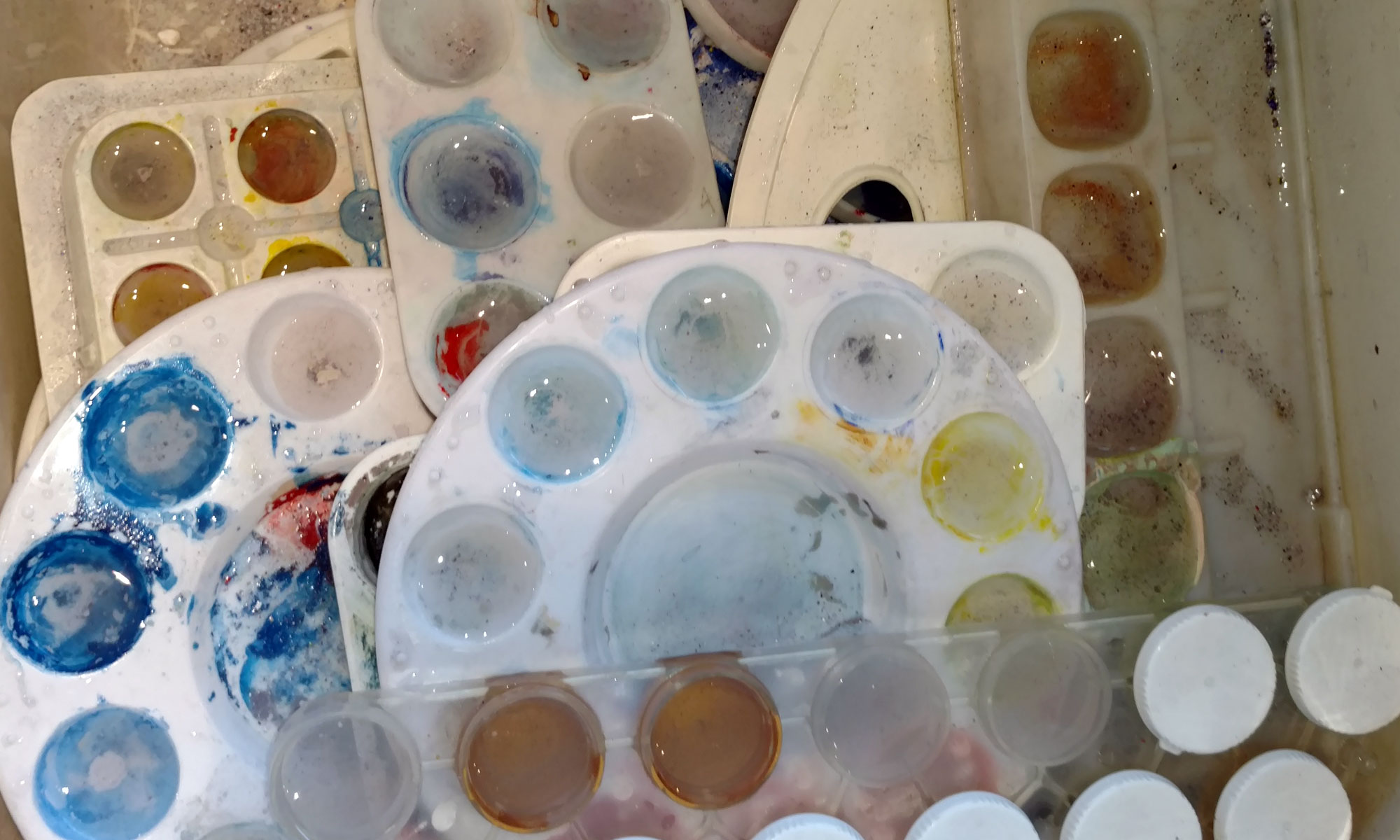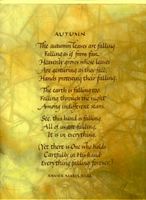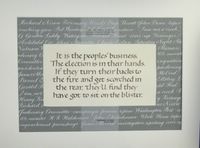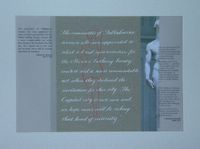I’m thinking about manuscript books. Why?
When I first became interested in calligraphy – this was in the early ‘80s – there were very few books on the subject. Looking through my bookcase, I see some favorites that remain the cornerstone of my education in calligraphy. They all include some instruction on the design and execution of a manuscript book.
The calligraphy classic The Calligrapher’s Handbook (updated in 1985) includes book design in two of its eight sections.
(updated in 1985) includes book design in two of its eight sections.
Marie Angel, who was a miniature painter as much as calligrapher, includes book design in two of the ten sections of her book entitled The Art of Calligraphy (1977).
(1977).
And Ann Camp devotes 20 of the 82 pages of her book Pen Lettering (originally published in 1958) to the design and preparation of a manuscript book. She explains that the student should make a small manuscript book because: “The writing of a continuous text will provide a better exercise than the planning of a single panel or broadside.”
(originally published in 1958) to the design and preparation of a manuscript book. She explains that the student should make a small manuscript book because: “The writing of a continuous text will provide a better exercise than the planning of a single panel or broadside.”
Lloyd Reynolds, finds space in his 60-page book Italic Calligraphy & Handwriting (1969) to discuss and illustrate the golden section as it relates to book design.
(1969) to discuss and illustrate the golden section as it relates to book design.
And Friedrich Neuegebauer discusses book design in his inspirational book The Mystic Art of Written Forms (1979). As he puts it, “The crowning achievement of all calligraphic work is THE HAND-WRITTEN BOOK.” (Those are his capitals.)
(1979). As he puts it, “The crowning achievement of all calligraphic work is THE HAND-WRITTEN BOOK.” (Those are his capitals.)
The persistence of the subject of manuscript books in these classics should be enough encouragement for me to embark on the design and preparation of my own manuscript book.
A couple of years ago I spent an afternoon in the Richard Harrison Collection of Calligraphy and Lettering at the San Francisco Publix Library. Wow! I sat at a long table and the librarian brought me book after book, each hand lettered and hand bound, which I could pick up and leaf through to my heart’s content. After about 4 hours of this, I staggered out of the library with pages of pencilled notes in my journal — a vain attempt to remember even a small fraction of what I’d seen. I had never even gotten to their collection of broadsides.
And yet I have never completed a traditional manuscript book of any length worth mentioning. Why is this? Perhaps the fear that this big commitment of time and energy will be rewarded with failure. Or perhaps the fear that a plain little hand lettered book will turn out not to have been worth the time.
And then I look at a site like The Medieval Bestiary, which links me to The Aberdeen Bestiary, and I’m hooked.
Like this:
Like Loading...







